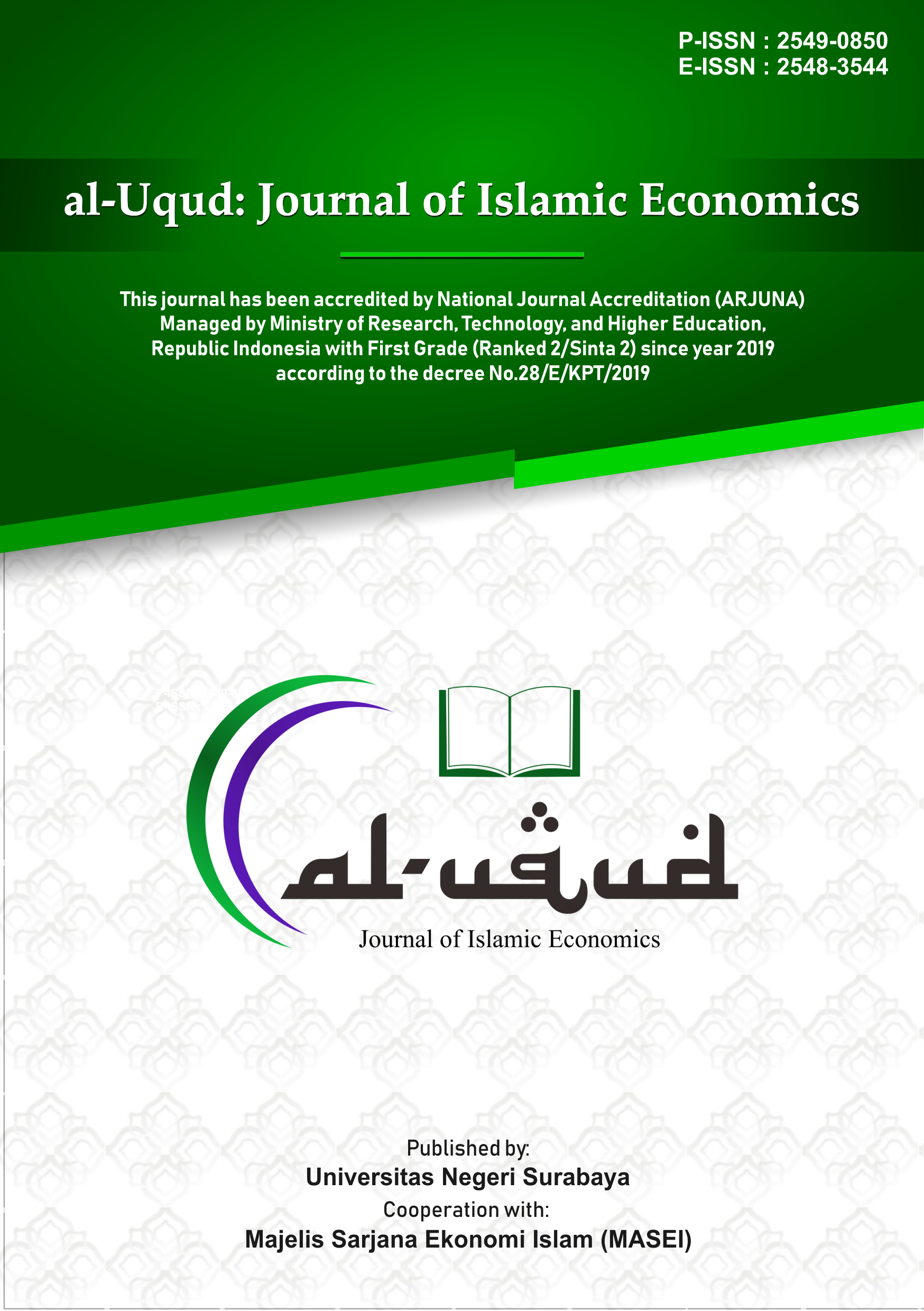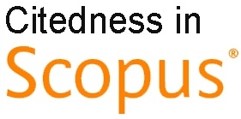Pro-poor capital assistance: A strategic analysis of Baitul Maal wat Tamwil microfinance
DOI:
https://doi.org/10.26740/aluqud.v6n1.p1-13Keywords:
SWOT analysis, Baitul Maal wat Tamwil (BMT), Capital assistant, Islamic microfinance, Economic empowermentAbstract
This paper aims to analyze the potential of the Baitul Maal wat Tamwil (BMT) strategy to empower the lower-middle-class people and analyze the recommended strategy for making economic empowerment through more effective and efficient Islamic microfinance. This research uses the in-depth interview method and SWOT analysis as further analysis. The results indicated that BMT has great potential, especially in human resources development and a clear market share to empower the lower classes of society. However, it is necessary to have an appropriate economic empowerment model following the conditions of the lower classes of society and the need for government roles to support the existence of an Islamic microfinance institution in the form of Baitul Maal wat Tamwiil (BMT). Several economic empowerment strategies have been implemented by Baitul Maal wat Tamwil (BMT). This study adds the existing literature related to Islamic microfinance's role to have the suitable model that efficiently and effectively empowers the poor Indonesian society, especially those who live in Yogyakarta.
References
Allen, & LLP, O. (2009). Islamic Microfinance Report | FinDev Gateway. International Development Law Organization (IDLO). https://www.findevgateway.org/paper/2009/02/islamic-microfinance-report
Bank Indonesia. (2017). Ringkasan eksekutif memberdayakan keuangan mikro syariah di indonesia.
Creswell, J. W., & Creswell, J. D. (2018). Research and Design Qualitative, Quantitative and Mixed Methods Approaches. In Thousand Oaks California. SAGE Publications, Inc.
Creswell, J. W., & Poth, C. N. (2018). Qualitative Inquiry and Research Design
Choosing Among Five Approaches. SAGE Publications, Inc.
Febianto, I., Johari, F. B., & @Zulkefli, Z. B. K. (2019). The Role of Islamic Microfinance For Poverty Alleviation in Bandung, Indonesia. Ihtifaz: Journal of Islamic Economics, Finance, and Banking, 2(1), 55. https://doi.org/10.12928/ijiefb.v2i1.736
Hadi, R., Wahyudin, U., Ardiwinata, J. S., & Abdu, W. J. (2015). Education and microfinance: an alternative approach to the empowerment of the poor people in Indonesia. SpringerPlus, 4(1), 244. https://doi.org/10.1186/s40064-015-0995-6
Hoetoro, A. (2018). Obstacles and Solutions in Performing Islamic Financial Contracts. IQTISHADIA, 11(1), 65. https://doi.org/10.21043/iqtishadia.v11i1.3200
Indraswari, P., & Fauzi, Q. (2019). Peran Baitul Maal Wat Tamwil (Bmt) Amanah Ummah Terhadap Peningkatan Usaha Pedagang Kecil di Pasar Karah Surabaya. Jurnal Ekonomi Syariah Teori dan Terapan, 5(2), 93. https://doi.org/10.20473/vol5iss20182pp93-107
Khan, A. A., & Phillips, I. (2010). The influence of faith on Islamic microfinance programmes. February.
Mukhibad, H., & Nurkhin, A. (2020). The Mechanism of Corporate Governance, Financial Performance, and Social Performance in Baitul Maal Wat Tamwil (BMT). Journal of Accounting and Strategic Finance, 3(1), 1-17. https://doi.org/10.33005/jasf.v3i1.66
Obaidullah, M. (2008). Role of microfinance in poverty alleviation: Lessons from experiences in selected IDB member countries. In Mohammed Obaidullah, Role of Microfinance in Poverty Alleviation: Lessons from Experiences in Selected IDB Member Countries, Islamic Development Bank.
Prasada, E. A. (2019). Figur Hukum Baitul Maal wat Tamwil (BMT) sebagai lembaga ekonomi kerakyatan. In CV. Pena Persada.
Roberts, C. D., & Roberts, G. B. (2005). Techniques in entrepreneurial finance for practitioners: helping entrepreneurs gain access to capital.
Taujiharrahman, D., Yuningrum, H., Yahya, I., Zaki Fuadi, N., & Hartono, S. (2021). Liquidity Ratio Analysis of Syariah Bank During the Covid-19 Virus Pandemic. Proceedings of the First International Conference on Islamic History and Civilization, ICON-ISHIC 2020, 14 October, Semarang, Indonesia. https://doi.org/10.4108/eai.14-10-2020.2303858
Downloads
Published
How to Cite
Issue
Section
License
Copyright (c) 2022 The author(s)

This work is licensed under a Creative Commons Attribution 4.0 International License.
CC BY 4.0 Abstract views: 838
,
Abstract views: 838
, PDF Downloads: 559
PDF Downloads: 559








